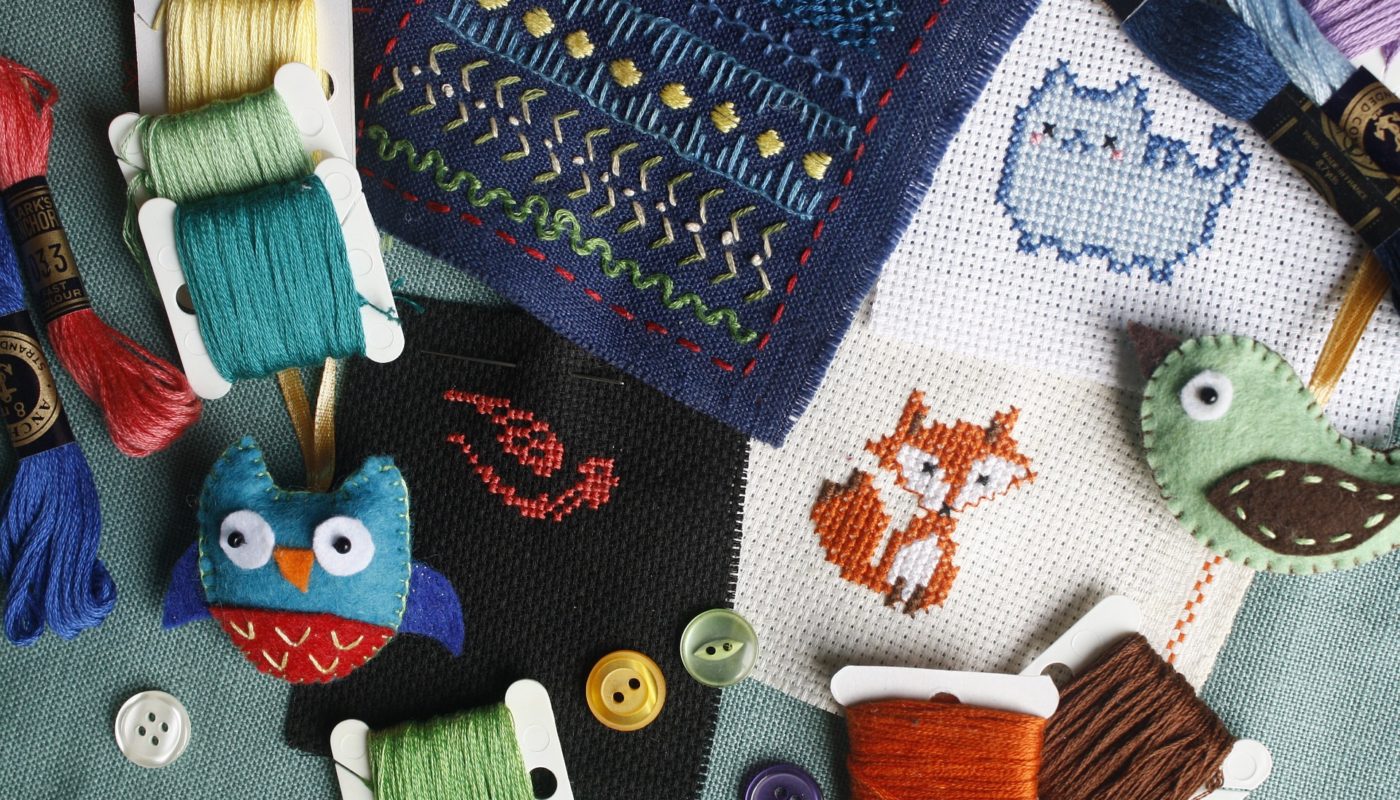Hand embroidery is a hobby that has gained popularity over the past year as it can help reduce stress and anxiety, is easy to learn, and is a useful creative outlet.
Hand embroidery is also popular due to the fact that it has very low entry costs. Unlike many other hobbies, embroidery just requires a few essentials to enjoy the craft.
Below we outline the necessary tools you need to get started with embroidery as well as a couple of additional items that can enhance your crafting experience:
Fabric
Fabric is to an embroider as a canvas is to a painter. This is where all your creativity will take place. You can start by buying a variety pack of simple fabrics. This will allow you to choose from a range of colors each time you begin a new project. Popular fabric types among embroiders include linen and cotton blends, flour sack cotton, and 100% cotton fabrics. These fabrics are known to be sturdy and easy to work with. It is important to work with a fabric that can hold a stitch easily (the lighter the fabric, typically the harder it is to embroider).
Once you feel comfortable with your embroidery skills, you can embroider designs on your own clothes such as jeans, t-shirts, and any other item you would like to add a design to.
Thread
Thread, or floss, is a critical component of embroidery. It is important to use a quality floss that does not fray or easily unwinds from the needle. The “gold standard” for thread is DMC. They offer a range of colors to choose from and many online tutorials reference what DMC color they are using, which makes it easy to follow other artists’ designs. However, there are other quality embroidery flosses out there you can buy in bulk that offers plenty of choice in color as well.
Needles
Needles can come in all different sizes so this is where your preference and vision comes into play. It is important to keep in mind that your needle needs to be able to make a hole that your thread can easily slide through, but not big enough where the thread itself cannot fill the hole. When embroidering with one strand, it is recommended to use a size ten needs, two strands call for a size nine needle, and three strands need a size 8 needs. The smaller the needle number, the bigger the needle itself. If you are working with a variety of thread sizes, it is best to have a small needle kit that gives you a variety of options to choose from.
Embroidery Hoop
A simple embroidery hoop can make the embroidery process a lot easier, especially for beginners. Hoops are inexpensive, help frame your project, and provide a sturdy surface for you to work on. Embroidery hoops are typically wooden and come in a variety of sizes so they do not have to limit the size of your project.
Scissors
Having scissors that are specified for embroidery can be very useful as it prevents fraying at the ends of the thread. Additionally, many embroiders enjoy having a designated pair for their craft not having to share the household scissors that wear fast and are often too dull to cut small thread precisely.
Additional Lighting
Avid embroiders tend to own a neck light, headlamp, or an additional lighting piece for when they embroider. It can be harder than you think to see the stitching in the evenings, even with overhead lights on. A chargeable, wireless light can be very helpful for those who have difficulty seeing.
Embroidery is a hobby you can enjoy with friends, family, or just in your own company. It is a creative outlet that has been practiced and enjoyed by many for years. It may seem daunting at first, but just take it one stitch at a time and you will have finished your first project before you know it.

